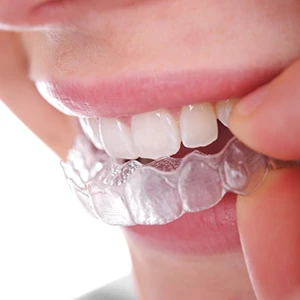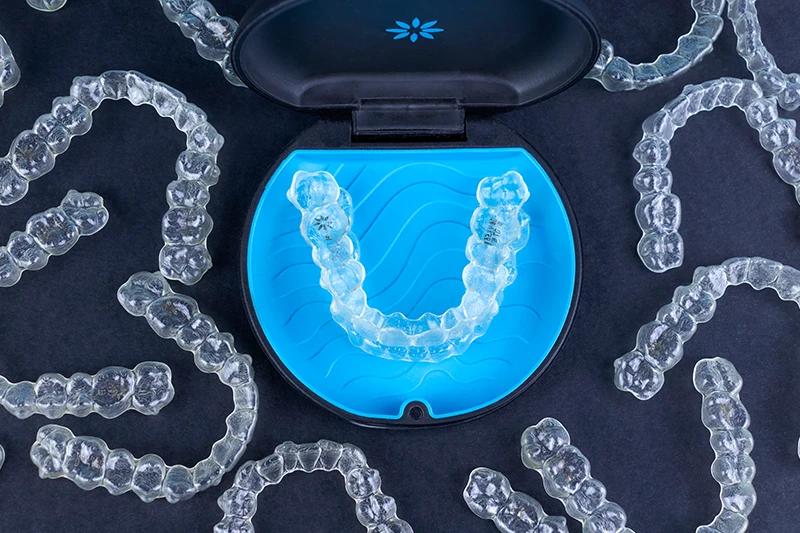Invisalign has gained significant popularity as an alternative to traditional braces for correcting dental misalignments. However, despite its widespread use, it’s important to acknowledge that Invisalign has its own disadvantages. So, what are the disadvantages of Invisalign? Let us explore the potential drawbacks of Invisalign treatment and provide insights into what patients should consider before opting for this orthodontic solution.
What is Invisalign treatment?
Invisalign treatment is a type of orthodontic procedure that includes the use of clear, removable aligners to straighten teeth and correct several dental misalignments. These aligners are specially made for each patient and help to gradually shift the teeth into the desired position over time. Unlike traditional braces, Invisalign aligners are invisible and should be removed before eating, brushing, and flossing, offering a more discreet and convenient orthodontic solution.

How does Invisalign treatment work?
Invisalign treatment is a method used by orthodontists to straighten teeth and address various dental misalignments. Here’s how it typically works:
Consultation:
You start with a consultation with a dentist or orthodontist experienced in Invisalign. They assess your dental condition, discuss your goals, and determine if Invisalign is right for you.
Customized Plan:
If Invisalign is suitable, the dentist creates a personalized treatment plan. This plan outlines the movements needed to achieve your desired tooth alignment.
Digital Impressions:
Instead of messy dental impressions, digital scans of your teeth are taken. These create a precise 3D model used to design your custom aligners.
Custom Aligners:
Based on your plan and digital impressions, a series of clear plastic aligners are made for you. These aligners gradually move your teeth over time.
Wearing Aligners:
You wear the aligners for most of the day and remove them only for eating, drinking (except water), brushing, and flossing. Every one to two weeks, you switch to a new set as your teeth adjust.
Check-ups:
You visit your dentist regularly to monitor progress and ensure the aligners fit properly. Adjustments may be made as needed.
Completion:
Once your teeth have shifted into the desired position, the active phase of treatment ends. To maintain the results, you may need to wear retainers at night.
What are the common disadvantages of Invisalign?
While Invisalign is gaining popularity, it’s crucial to recognize that it comes with some drawbacks. These drawbacks may not affect everyone, but it’s important to understand them before committing to the treatment.
8 Common Disadvantages of Invisalign
Speech
Some people notice a slight change in how they pronounce words, especially when they first start wearing the aligners, though not everyone experiences this.
The most common speech issue that arises with Invisalign is difficulty pronouncing ‘s’ sounds; it can sometimes lead to a slight lisp during treatment. While this can persist for the duration of the process, most people find that it improves within the first week or so.
Cheek biting and tongue cuts
Cheek biting and tongue cuts are common concerns when wearing Invisalign retainers. Despite the smooth and comfortable nature of the retainers, having a foreign object in your mouth constantly can lead to irritation of the cheeks and tongue. This may result in roughness inside the cheeks and occasional small cuts on the tongue.
Allergic Reactions
Allergic reactions to Invisalign retainers are rare but possible. There’s a small chance of reacting to the special plastic used in the retainer. To avoid any surprises, it’s wise to conduct a skin test before committing to treatment. Apply a small amount of the plastic on your skin to check for any reactions. If your skin remains unaffected, you can proceed with confidence. While some individuals may experience mild reactions after starting treatment, most find them manageable.
Headache and Jaw Pain
Patients may experience headaches and jaw pain during Invisalign treatment, which is typical for teeth realignment procedures. This discomfort can also affect other areas, such as the head and neck. Individuals who suffer from migraines should carefully consider whether Invisalign is the best option for them, as it may potentially worsen their headaches.
Dry Mouth
Another downside of using Invisalign is that it may cause dry mouth, a condition known as ‘xerostomia.’ Wearing the retainer for extended periods can change how your mouth behaves, leading to reduced saliva production and swollen gums, resulting in dryness. While this is a common issue, it’s something to think about when considering cosmetic dental treatments.
Bleeding and receding gums
Just as Invisalign can cause dry mouth, wearing the aligners might irritate your gums, leading to inflammation, swelling, and even bleeding. If you’re worried about how it might affect your gums, it’s a good idea to talk to your dentist or orthodontist.
Nausea and Dizziness
These symptoms often occur more frequently at the beginning of treatment when your mouth is getting used to the aligners. The pressure from the Invisalign retainer on your teeth and gums can contribute to these dizzy spells.
Weight Loss
During Invisalign treatment, some patients may find themselves losing weight. This isn’t directly linked to the aligners themselves but rather to changes in eating habits that come with wearing them.
Because the aligners need to be worn for the majority of the day, there’s less opportunity for snacking between meals. Additionally, patients must remove the aligners while eating, which can reduce overall food consumption.
Furthermore, some patients may eat less due to discomfort caused by the aligners, resulting in gradual weight loss. While this weight loss is typically not excessive or harmful, it’s something to consider before starting Invisalign treatment.
Conclusion
While Invisalign offers numerous benefits for straightening teeth discreetly, it’s essential to consider the potential disadvantages before undergoing treatment. From minor discomfort to speech issues, being aware of these drawbacks can help you decide whether Invisalign is right for you.
Book a complimentary Invisalign consultation today
Schedule a consultation with Abadin Dental in Coral Gables, FL, today! Book an appointment online or call us at (305) 783-3750 for new patients and (305) 446-1584 for existing patients. Let us help you achieve the smile you’ve always wanted!
FAQ
Does Invisalign treatment hurt?
While discomfort is common, especially at the beginning, Invisalign treatment usually involves minimal pain that can be eased with over-the-counter pain relievers.
Can Invisalign affect speech?
Some patients may experience temporary speech changes, like a slight lisp, due to the aligners in their mouth. However, these typically resolve on their own with time.
Are there risks of allergic reactions to Invisalign?
Although rare, allergic reactions to the materials in Invisalign aligners can occur. Patients can undergo a skin test before starting treatment to check for any potential allergies.


